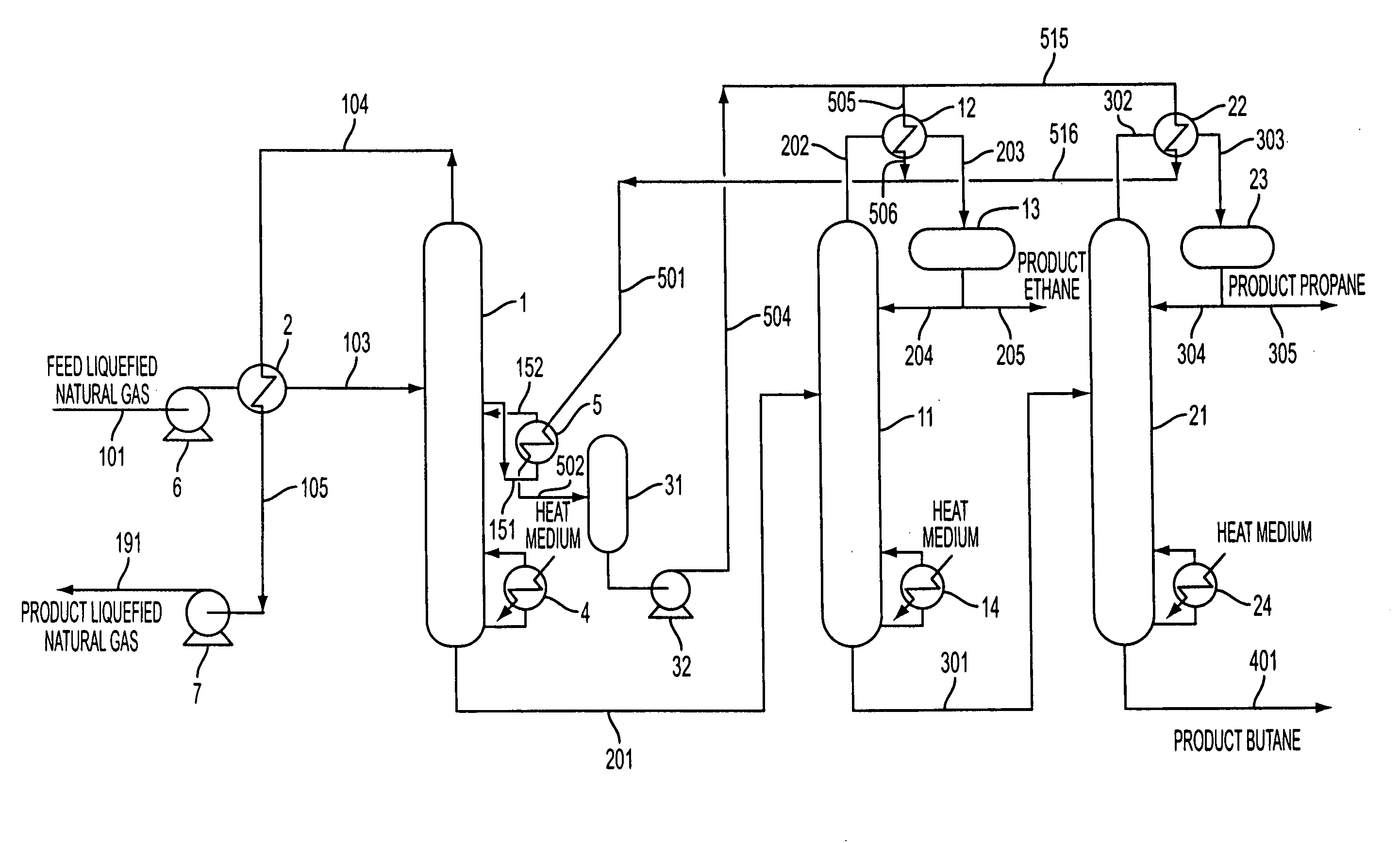Process and apparatus for separation of hydrocarbons from liquefied natural gas
a technology of hydrocarbon separation and hydrocarbons, which is applied in the direction of absorption purification/separation, liquefaction, lighting and heating apparatus, etc., can solve the problems of affecting the operation of the deethanizer, and damaging the deethanizer, so as to achieve low energy and low cost without impairing the ease and reliability of operation. , the effect of low cos
- Summary
- Abstract
- Description
- Claims
- Application Information
AI Technical Summary
Benefits of technology
Problems solved by technology
Method used
Image
Examples
example 1
[0074] In this Example is explained a process having a flow shown in FIG. 2, for recovering ethane, propane and butane from feed liquefied natural gas. Here, feed liquefied natural gas 101 having a pressure of 0.5 MPa (A) and a temperature of −152° C. is introduced into the present process at a flow rate of 625 tons / hour. The feed liquefied natural gas had a composition shown in Table 1.
TABLE 1Composition of feed liquefied natural gas (mol %)N20.46Methane89.79Ethane6.47Propane2.23Butane1.05Components heavier than butane0.00Total100.00
[0075] The feed liquefied natural gas is pressurized by feed liquefied natural gas pump 6 and undergoes heat exchange with the overhead gas of demethanizer at overhead gas condenser 2 and pressurized residue gas heat exchanger 9. Thereby, demethanizer feed 103 is heated up to about −100° C. and fed to the 12th tray of demethanizer 1.
[0076] The demethanizer has trays of 23 stages in terms of theoretical stage number inside and is operated at the top u...
example 2
[0079] In this Example, as shown in FIG. 3, two intermediate-stage heat exchangers for demethanizer are installed in order to give the heat transfer medium temperature levels more appropriate for cooling medium used in the overhead gas condensers of deethanizer and depropanizer. That is, there are independently installed a heat transfer medium circulation system for cooling the deethanizer overhead gas and a heat transfer medium circulation system for cooling the depropanizer overhead gas and, in each of these heat transfer medium circulation systems, an intermediate-stage heat exchanger is installed. For example, when the deethanizer is operated at a lower pressure for the lighter weight and smaller size of the deethanizer, it is necessary to use a cooling medium of lower temperature at the overhead gas condenser of the deethanizer. On the other hand, even if the depropanizer has been designed for an even lower pressure, it is not required to use a cooling medium as cold as require...
PUM
 Login to View More
Login to View More Abstract
Description
Claims
Application Information
 Login to View More
Login to View More - R&D
- Intellectual Property
- Life Sciences
- Materials
- Tech Scout
- Unparalleled Data Quality
- Higher Quality Content
- 60% Fewer Hallucinations
Browse by: Latest US Patents, China's latest patents, Technical Efficacy Thesaurus, Application Domain, Technology Topic, Popular Technical Reports.
© 2025 PatSnap. All rights reserved.Legal|Privacy policy|Modern Slavery Act Transparency Statement|Sitemap|About US| Contact US: help@patsnap.com



